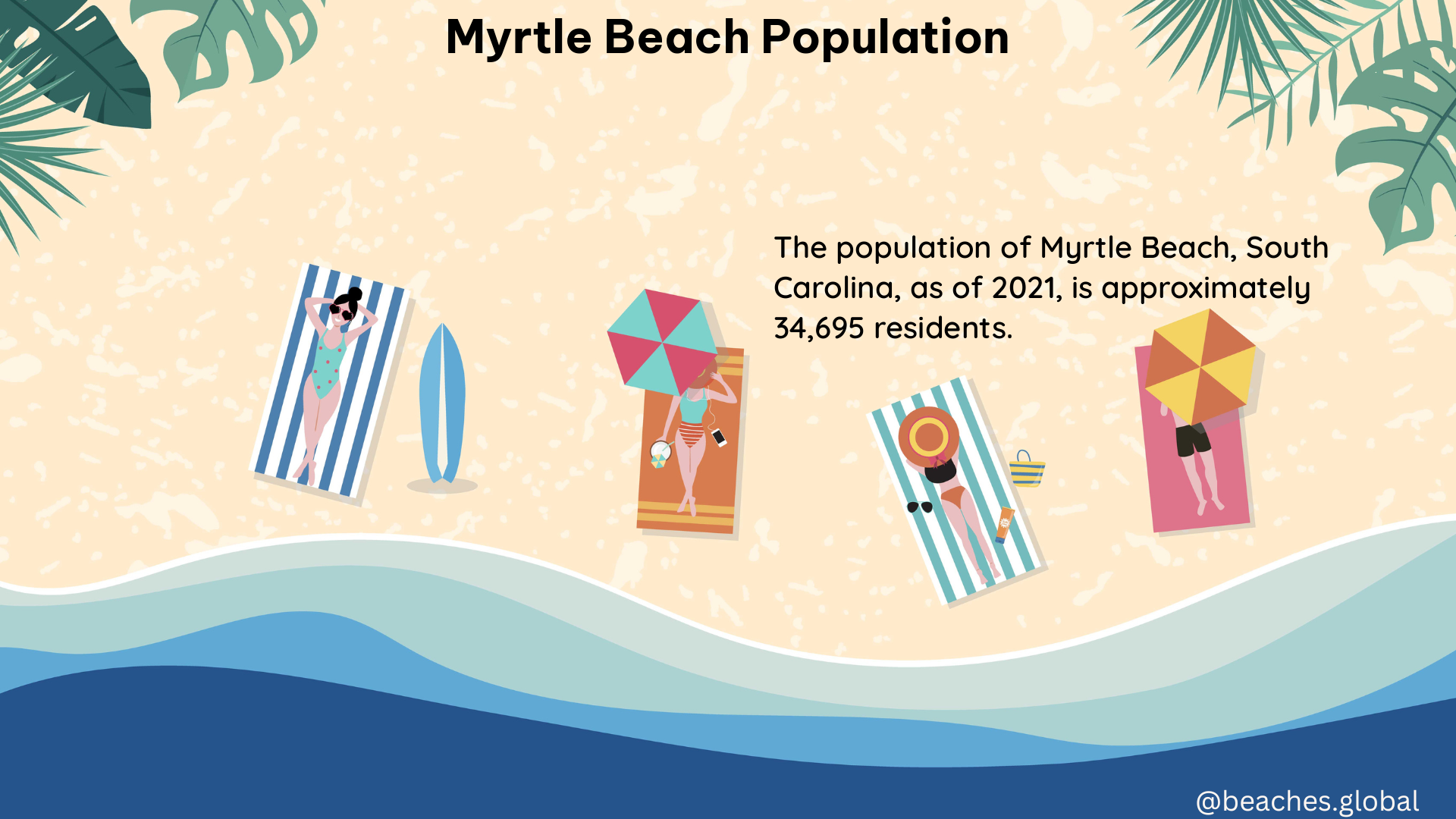Myrtle Beach, a picturesque coastal city in South Carolina, has been a popular tourist destination for decades, attracting millions of visitors each year. As the center of the Grand Strand, a 60-mile stretch of beautiful beaches, Myrtle Beach has experienced steady population growth, making it an increasingly vibrant and dynamic community.
The Current Population of Myrtle Beach
According to the latest estimates, the population of Myrtle Beach in 2024 is 40,865. This figure represents a significant increase from the city’s population of 27,109 recorded in the 2010 census, reflecting a growth rate of nearly 19% over the past decade.
The Demographic Makeup of Myrtle Beach

Myrtle Beach’s population is diverse, with a mix of residents from various backgrounds and age groups. The median age in the city is 47 years, with males having a median age of 44.9 years and females 49.3 years.
Racial Composition
The racial makeup of Myrtle Beach is as follows:
- White: 66.97%
- Black or African American: 13.01%
- Native American: 0.32%
- Asian: 2.3%
- Pacific Islander: 0.11%
- Other/Mixed: 5.35%
- Hispanic or Latino: 11.94%
Citizenship Status
The majority of Myrtle Beach residents, 88.85%, were born in the United States, with 30.01% having been born in South Carolina. The remaining 7.78% of the population are non-US citizens.
Economic Factors Influencing Myrtle Beach’s Population Growth
The economy of Myrtle Beach is heavily dependent on the tourism industry, with hotels, resorts, and over 100 golf courses being major contributors. This has led to a steady influx of new residents, both permanent and seasonal, seeking employment and business opportunities in the area.
Average Household Income and Poverty Rate
The average household income in Myrtle Beach is $80,513, which is higher than the national average. However, the city also has a poverty rate of 15.28%, indicating that not all residents have benefited equally from the economic growth.
Historical Population Trends
Myrtle Beach has experienced significant population growth over the years, with the most notable increase occurring between 1970 and 1980, when the population rose from over 8,500 to over 18,000. The city did see a decline in population around the 2000 census, dropping by over 8%, but the population has been on the rise again since then, growing by over 19% between 2000 and 2010.
Population Growth Rates
- 1970 to 1980: Increased from over 8,500 to over 18,000
- 2000 to 2010: Increased by over 19% to over 27,000
- 2010 to 2024: Increased by almost 19% to 40,865
The Waccamaw Tribe and Early European Settlement
The Waccamaw Tribe were the earliest inhabitants of the Myrtle Beach area, with the first Europeans arriving in the late 18th century. This rich history has contributed to the diverse cultural heritage of the city.
Conclusion
Myrtle Beach’s population growth reflects its status as a thriving coastal community and a popular tourist destination. With a diverse population, a strong tourism-based economy, and a rich history, Myrtle Beach continues to evolve and attract new residents and visitors alike.
